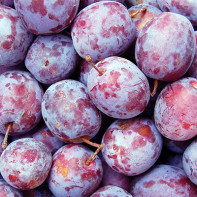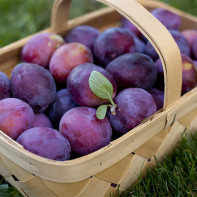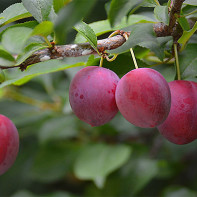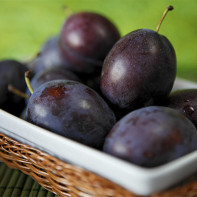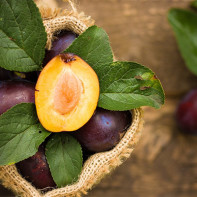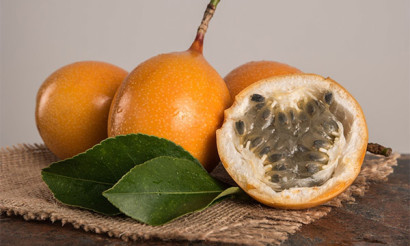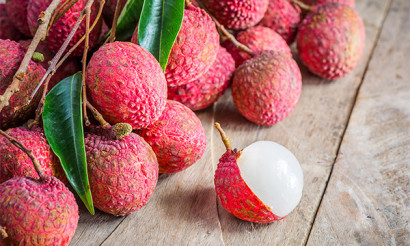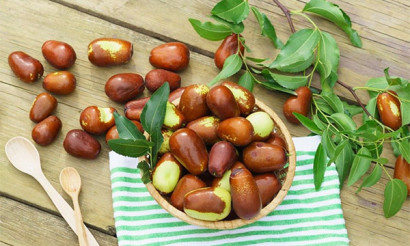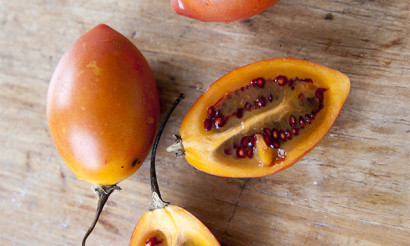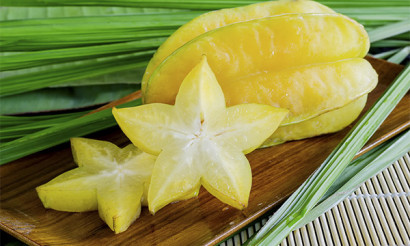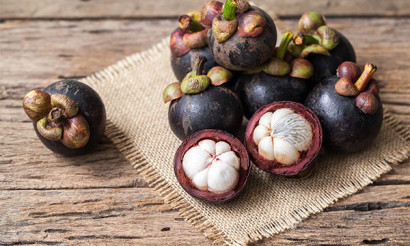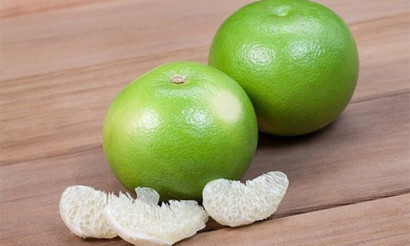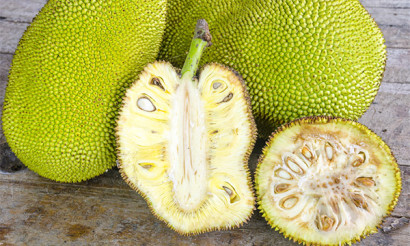Plum: types, useful properties and contraindications
Since the appearance of such a fruit as plum, scientists have discovered all its useful and harmful properties. This plant was obtained several thousand years ago in the territory where Turkey is now located. The culture arose as a result of crossing cherry plums and blackthorns. The fruits were successful: they had the taste of alycha and gained resistance to cold, which is characteristic of the blackthorn. In addition, the product acquired a number of positive properties of thorn. The result is a fruit that combines a set of positive qualities of the two plants.
- Types of plums
- What is the difference between a cherry plum and a plum
- Composition and calories
- What are the benefits of plums
- General usefulness
- For Women
- For Men
- In Pregnancy
- Breastfeeding
- For children
- Can I Eat Plums to Lose Weight?
- The benefits and harms of plum juice
- Plum Pips: Benefits and Uses
- Plum Leaf Benefits
- Plums in Medicine
- Diabetes Mellitus
- Pancreatitis
- Gastritis
- For the Intestines
- For constipation
- For gout
- For Liver
- Plum-based folk medicine recipes
- Plums in Cosmetology
- Harm and Contraindications
- How to choose and store plums
- Can plums be frozen?
- Can plums be dried?
- How to eat plums correctly
- How much can I eat per day?
- Can I Eat at Night and on an empty stomach?
- Can we eat the seeds?
- What can be made of plums: Recipes
- Compote
- Jam
- Tkemali
- Ajika
- Wine
- Pastila
- Pickled plums
- Can we give plums to animals?
- Interesting Facts about Plums
Types of Plums
There are many varieties of plums. The most common of them are the following types:
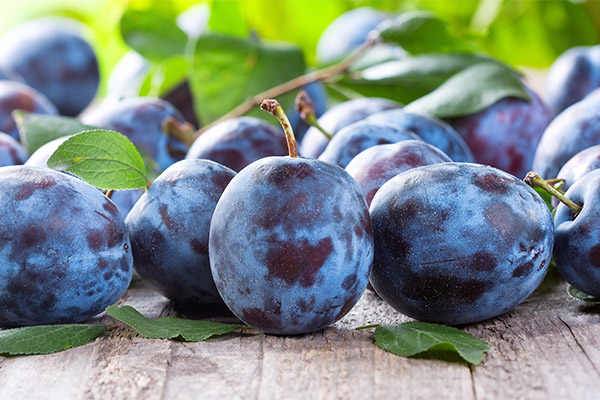
- Home plum. The tree can reach 15 meters in height. The fruits come in different colors - yellow, blue, red, purple. They are all used for food. The plant can be 25 years old and bear fruit for 10-15 years.
- The prickly plum (thorn) is a small shrub with thorns. It can grow up to 4-5 meters tall. The fruits are small, blue in color, covered with plaque, and have a single stone. Such a fruit has a sour, tart taste and is widely used in folk medicine.
- Chinese plum is a tree with a height of 10-12 meters. The fruits are yellow, pear-shaped or oval in shape, up to 5 cm in diameter, have purple and red coloring. This type of plum is grown quite rarely.
- The Portuguese laurel is an evergreen shrub that can grow up to 1 meter. The shape of the plum resembles an egg. The fruits are characterized by a bitter-sour taste and have a single stone.
- The sea plum is another type of plant that only grows on the Atlantic coast of the continent of North America. It is a small shrub of only 2-4 meters in height. The fruit is small, up to 2 cm in diameter, also has a single pit.
What is the difference between the cherry plum and the plum
- First of all, these varieties of fruit differ in color. A cherry plum usually has a yellow-red color, while a plum is characterized by a dark blue color.
- These two products differ in chemical composition and nutritional value. So, plum contains more sugars and less calcium compared to alycha.
- Alycha grows in the southern regions, especially in the Caucasus. This is due to the fact that the plant cannot withstand low temperatures. Plum, on the other hand, is found in all areas with temperate climatic conditions.
- The fruits of cherry plum ripen by the end of summer-beginning of autumn, while plum bears fruit much earlier. The cherry plum tree begins to bear fruit two years earlier than plum trees.
- Plums are much easier to dry, resulting in prunes. A cherry plum does not have a stone that separates. In addition, this variety is less exposed to pests, undemanding to the soil. Under our natural conditions, growing cherry plums does not require any special means. Due to this, the product is environmentally friendly. Plum, on the other hand, is subject to diseases and has no resistance to pests.
Composition and calories
Plum is a nutritious summer fruit with a very juicy and sweet flavor. The fruit is rich in a wide variety of components that provide significant benefits to the human body.
- For example, plum contains vitamin A, which is involved in the biochemical processes of the immune system, increases the protective function of the body, and is useful for vision. In addition, the product contains vitamins PP, group B, ascorbic acid, tocopherol. Vitamin K reduces inflammation and increases the sensitivity to insulin.
- Fiber in the plum tree fruit is important for the digestive tract. There is much more of it in dried fruit.
- Plum also contains polyphenols, which are antioxidants that reduce the risk of tumors. It is these substances that regulate the acid content and are responsible for the smell and color of the fruit.
- Iron ensures the normal functioning of the body's circulatory system.
- Of the micro- and macronutrients in the plum are found such substances as magnesium, calcium, sodium and others.
The caloric value of the product is quite low, only 49 kcal per 100 g.
What are plums good for?
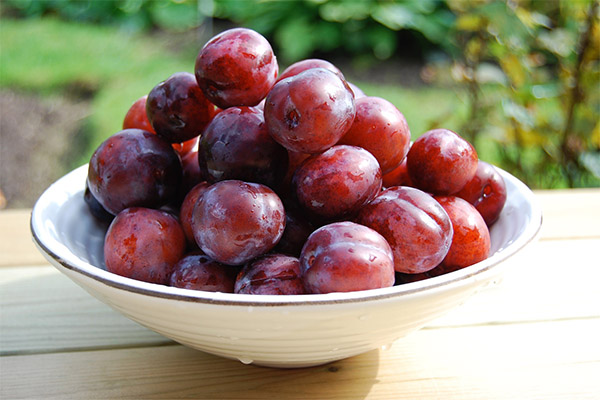
General benefits
- Plums promote heart health. Dark fruits contain more antioxidants, which have anti-inflammatory properties, making them less likely to damage cells.
- Fiber helps with bowel function.
- Anthocyanins, which are the reddish-blue pigments of the fruit, protect the body from cancer by eliminating free radicals. In addition, vitamin A in plums is known to prevent the development of oral cancer. This substance also protects the eyes from damage caused by exposure to ultraviolet light.
- The presence of plums in the diet helps to strengthen the bone system. The boron in the product helps maintain bone density.
- Plum ensures the absorption of iron in the body. This is due to the high content of ascorbic acid in the crop. Iron is necessary for the formation of red blood cells, improves blood circulation and prevents the development of anemia.
- Plum's low glycemic index allows controlling blood glucose levels.
- Potassium helps to maintain blood pressure at optimal levels.
- Antioxidants in the plum fruit slow the aging process, promote skin rejuvenation, remove traces of wounds and provide faster healing.
For women
- During menstruation, a woman's body often experiences a decrease in hemoglobin levels. Plums contain iron, which prevents the occurrence of iron deficiency anemia.
- These fruits are responsible for the rapid regeneration of the skin. Therefore, the product can be used for acne marks, cuts and microcracks.
- The fruit is important for women who are struggling with extra centimeters on the waist. Regular consumption of plums allows you to cleanse the body. The dietary fiber in the product allows you to speed up the metabolic processes. As a result, food is absorbed faster and stops being deposited in unnecessary places.
- The rich antioxidant composition of the crop helps protect the body from the harmful effects of radionuclides and poisonous components. These components are the prevention of uterine and breast cancer.
- In addition, the fruit of the plum tree has found widespread use in cosmetology. This fruit is an ingredient in most cosmetic products that provide collagen production and have a rejuvenating effect.
For men
- It is believed that the use of plums in food additionally provides the synthesis of testosterone and improves prostate function.
- It is known that the male body is more often faced with high levels of cholesterol in the blood, which leads to heart abnormalities. Plum provides cleansing of blood vessels and removal of cholesterol plaques from their cavities. This is the prevention of atherosclerosis, thrombosis.
- Plum fruits can improve the psycho-emotional environment. This is especially important for people who periodically face various stressors. It is enough to eat five fruits a day to be calm and sleep well.
- Plum is also useful for men who abuse alcoholic beverages, it can cleanse the liver from the effects of ethanol in time. At the same time, excess "bad" cholesterol is excreted along with excess bile.
- In addition, this product helps to maintain blood pressure at optimal levels and prevent its surges.
During pregnancy
The question regarding the use of plums during pregnancy and during breastfeeding is still open. The rich vitamin and mineral composition of the product is very useful for the female body and the baby, but the high activity of some substances in the plum can cause discomfort and even lead to serious disorders.
- During pregnancy, the product is useful because it contains folic acid, which is necessary for the proper formation of the future child.
- Potassium contained in the fruit is able to eliminate swelling, which is often faced by pregnant women.
- Dietary fiber found in the fruit stimulates the functioning of the gastrointestinal tract, as a result, you can get rid of constipation and abdominal discomfort.
- Vitamin C helps strengthen the immune system. Regular consumption of plums during the period of carrying the baby helps to regulate blood pressure.
The product is contraindicated in cases of individual intolerance. Abuse can lead to diarrhea, flatulence. It is not recommended to eat unripe fruit. This can provoke pain in the digestive tract.
When breastfeeding
When breastfeeding a newborn baby, a young mother should not consume plums. This can cause the development of constipation or diarrhea in the baby. Introduce such a product in the diet of a breastfeeding woman can only be after two months from the time of delivery. And this should be done gradually, controlling the reaction of the baby and the woman's body.
For children
Dietitians recommend introducing plums to children's diet no earlier than six months of age and only if the child has already tried other vegetable and fruit complementary foods. At the same time, the fruit should be given not in pure form, but as a compote made from dried fruit. Plum puree can be included in the children's menu not earlier than 1 year old. This is due to the fact that the product is characterized by a high degree of allergic reactions.
In rare cases, you can use a decoction of prunes from 4 months, when the baby suffers from constipation. However, the doses should be minimal. Before using such a remedy, you should consult with your pediatrician.
Prunes contain many vitamins and minerals that ensure healthy growth and development. It is recommended to give your child plum compote and fresh fruit during the season of colds. Such a drink will help to strengthen the protective function of the body. The fruit has the ability to gently cleanse the intestinal tract, increase appetite and normalize weight.
Also plums should be given to children who have been detected worms.
If the child is treated with various medications, you can prepare a decoction of prunes. This way will improve the effect of the drugs and cleanse the baby's body of toxins.
Is it possible to eat plums while losing weight?
Plum is characterized by cleansing properties. Therefore, it can be used in weight loss. In addition, there are even known several diets that are based on this product. For example, the widely known plum diet, which consists of unloading days using plums. Carry out such a discharge can be no more than two times a week. This will allow for a few days to get rid of a couple of extra pounds. The diet is strict, since only one product is used. Along with this, you can drink non-caloric liquid, such as mineral water or tea.
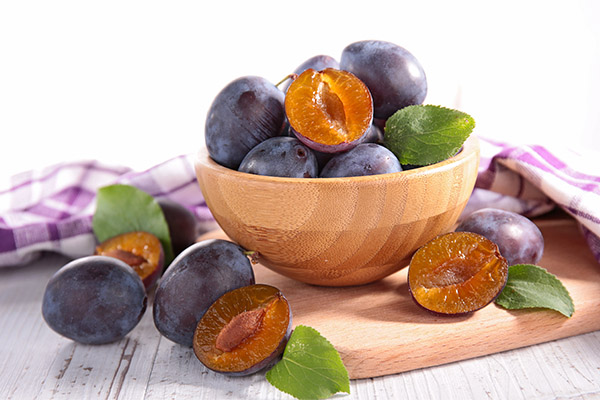
During the day in this case it is necessary to consume about 1 kg of plums, one and a half liters of water and up to 1 liter of green or herbal tea. For such purposes, you should choose ripe fruits, the chosen variety should have a small content of sugars. Also, the fruit should not be very sour.
The fruit should be washed, dried, and divided into five parts. Each part of the product should be eaten at equal intervals. The same should be done with the specified amount of liquids. It is recommended to drink tea half an hour before the plum, and water half an hour after eating the fruit.
Instead of plums, you can use 1-2 times a day squeezed from these fruits. After the unloading day, it is important to adhere to the rules of nutrition, that is, to exclude sweet and floury dishes, alcoholic beverages, reduce the consumption of fried foods.
For the best effect, it is recommended to replace the last meal with fresh plums, drinking them with water, as on the unloading day.
The benefits and harms of plum juice
Plum juice has the same positive and negative properties as the plum itself. When the hard part is removed, the concentration of a number of substances that are present in the fruit increases. This leads to restrictions on the amount of juice you can drink. So, you can consume not more than 100 ml of the drink at a time.
As for the plum compote, this drink also repeats all the properties of the raw product. However, due to the addition of sugar and heat treatment, the caloric value is twice as high as that of fresh plums.
Plum Pips: Uses and Benefits
The pits contain oil, which is used in ascaridosis, but without a special treatment, which can not be carried out in the home, you should not use them. They are found to contain many salts of hydrocyanic acid, which are called cyanides.
In order to get a therapeutic effect of such oil, it must enter the body in sufficient quantities. Along with this, cyanides will accumulate, which are dangerous to health. For this reason, it is contraindicated to eat the pips and to squeeze the oil from them yourself. To protect yourself from exposure to deadly substances, you can only use plum seed oil that has been obtained industrially.
The benefits of plum leaves
Plum tree leaves are used to obtain infusions and decoctions that help in the treatment of various injuries. For example, decoction treats periodontal disease, wounds that have a purulent discharge and take a long time to heal, inflammatory processes in the kidneys and bladder.
To prepare a decoction, you need to brew about 200 g of leaves in a liter of boiling water for half an hour. Then the liquid should be strained, cooled and used as directed.
Plums in medicine
Plums have found wide application in medicine. So, with the help of this fruit, you can get rid of high body temperature and fever, eliminate the symptoms of seasonal avitaminosis. Also this product normalizes the liver, treats diseases of the digestive tract, improves appetite and promotes weight loss. Also the fruit of the plum plant is used for inflammation in the mouth, hormonal disorders.
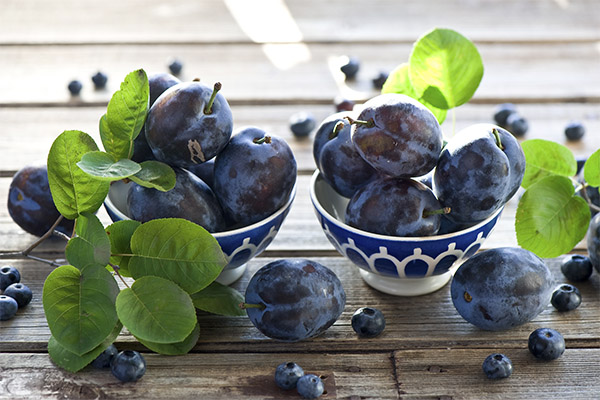
For Diabetes Mellitus
Patients with diabetes can eat about 100-150 g of raw fruit a day. If the plum is dried, that is, in the form of prunes, the norm is reduced to 40 g per day. This is due to the high caloric content of such a product.
Important: The glycemic index of plums is 22 units.
In pancreatitis.
It is allowed to consume 3-4 ripe plums per day, but without the skin. Include such a fruit in your diet can only be after a meal. If the diagnosis was diagnosed several years ago, even with an exacerbation, you can eat a couple of fruits without peel. In the first years of pancreatitis during an exacerbation, the use of plums is contraindicated.
With gastritis
It is acceptable to eat 3-4 ripe fruits. You can drink plum juice, but it should be diluted in a ratio of 1:2 with water. During an exacerbation, any plum-based products are prohibited.
For the intestines
Fresh or dried plums, drinks based on them have a mild laxative effect, as a result of which the intestinal tract is cleared. The product also helps to increase the number of beneficial bacteria, because plums have dietary fiber, which stimulates their production.
In addition, the product stimulates intestinal peristalsis, eliminates parasites that breed in the intestines, and also prevents putrefaction due to the presence of pectin components.
With constipation
To eliminate constipation, you should mix dried plums with oats in a ratio of 3:1. The resulting mixture should be poured boiling water and infused for an hour. Then strain the composition and use 100 ml 3 times a day.
With gout
In this disease, you can eat no more than 4 fruits a day, and you can do it only after a meal.
For the Liver
Plum can protect the liver from various damages, strengthen it by removing toxins from the body and purifying the blood.
The components of the fruit protect the liver from negative effects. The product contains elements that help to unload the organ. In addition, plum fruit ensures the activity of the biliary tract, which leads to the removal of toxins from the body.
The recipes of traditional medicine based on plums
Raw fruits contribute to the normalization of intestinal function, cleansing the body and improving overall health. For this purpose, it is enough to consume the fruit several times a day between the main meals.
Decoction from the leaves of the plum tree is used to treat wounds, as well as the prevention of diseases of the upper respiratory organs. For its preparation, you need to take 20 grams of crushed plum leaves and pour a glass of boiling water. The mass should be put on the fire for half an hour, and then strain. Take the ready remedy three times a day for 50 ml.
Dried plums are an excellent remedy for blisters. To do this, pour 50 grams of dried fruits with a glass of milk, bring the mass to a boil, remove from the heat and insist 10-15 minutes. After this, prunes should be applied to the area with corns for 20 minutes.
Plums in cosmetology
Due to its rich chemical composition, the fruit is an indispensable means to strengthen the curls and restore the skin. The easiest way to use a plum mask is to apply crushed fruit pulp to the skin for 20 minutes.
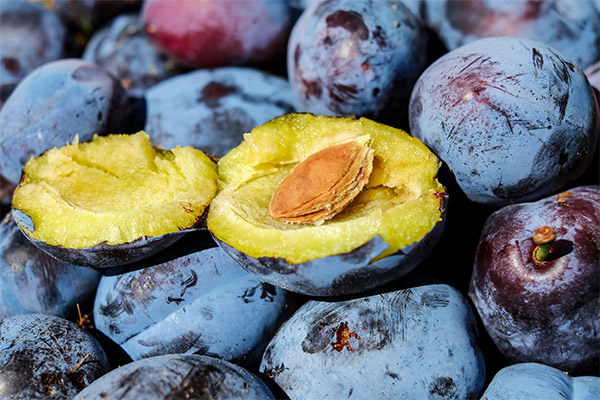
To prepare a cleansing mask, you need to mix the crushed pulp of several plums with a tablespoon of juice of onion and garlic. The resulting mass is applied to a steamed face and keep for 10-15 minutes, and then wash off with warm water.
To prepare a mask for the hair you should squeeze the juice of six plums and add a teaspoon each of honey and starch and 0.5 teaspoon of yogurt. All the ingredients should be thoroughly mixed and applied to the hair, for half an hour. Rinse the mixture with a shampoo.
Harms and contraindications
Plum is characterized by many useful properties, but, despite this, it also has some side effects that can deliver discomfort and even harm human health. Contraindications to the consumption of such fruit are overeating patients with diabetes. Plum can contain up to 10 percent of sugars, so excessive consumption in this disease is contraindicated. Also, this product should be avoided in the case of urolithiasis, gout in its advanced form, and renal insufficiency. Diseases of the urinary tract, such as obstruction or prostatitis, are also a limitation for the use of plums in the diet, because the fruit of this plant has a diuretic effect.
Allergies or individual intolerance may also appear. Such symptoms are quite rare, but may occur in children.
The consumption of large amounts of plum fruits can lead to the destruction of the upper layer of the tooth enamel.
How to choose and store plums
When buying, you should buy plums that have no mechanical damage, have a smooth surface, without blackened spots. You can smell the fruit through the rind; it should not have a tart aroma or resemble an alcoholic beverage. The ripe fruit is usually firm, with a dry, brown stalk that may fall off as it dries. The color of the fruit should be uniform.
Store unripe fruit at room temperature, but away from direct sunlight. Do not use plastic bags for storage. If you do put the fruit in a bag, it is important to leave it untied or to tie it by sucking all the air out of it with a special device. You can use egg cartons to store fruit in the refrigerator.
After purchase, plums should be used as soon as possible as the product loses its taste and aroma over time. The fruit can be stored at room temperature for several days, in the refrigerator - up to two weeks.
Can you freeze
Frozen plum fruits can be stored for a year. You can freeze them only once. Before putting them in the freezer, you should wash the fruit, remove the seed from them, and pack them in cling film or a bag. Also a container can be used for freezing.
Can I freeze or dry them?
Plums can easily be dried. In this form they can be stored for several months. Preparing the fruit involves rinsing it, letting it ripen at room temperature and then blanching it in a solution of baking soda. After this, the fruit can be placed for a few hours in the oven. The temperature should be 45 degrees.
How to eat plums properly
Before eating the fruit should be rinsed under running water, steeped and rinsed again under cold running water.
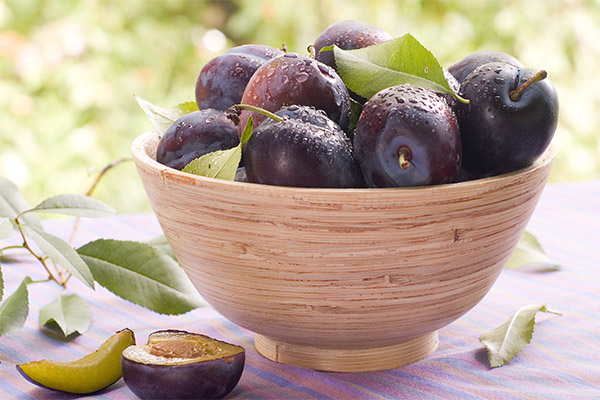
Do not eat unripe and especially green fruit. This can cause an upset stomach.
How much you can eat per day
When using plums in the diet, it is important to consider that the product is characterized by laxative and diuretic properties. It should be remembered that the daily rate is calculated individually. On average, an adult can eat about 250 g of fruit.
Is it allowed to eat at night and on an empty stomach?
The night is allowed to eat a few fruits, but you should not do it less than 3-4 hours before going to sleep. The night can become sleepless because of rumbling in the stomach and possible gastrointestinal upset.
On an empty stomach, plum fruit should be consumed by people who suffer from constipation. In other cases, plum can be used after the main meal.
Is it possible to eat the seeds?
Few people know that you can not eat plum pits, because they are poisonous. They contain a lot of amygdalin, which forms hydrocyanic acid when entering the stomach under the influence of hydrochloric acid. In large quantities such substance leads to poisoning, symptoms of which are bright pink spots on the skin, almond smell from the mouth of the victim, vomiting and diarrhea, respiratory and coordination disorders, confusion of speech, dilated pupils.
Excessive consumption of plum pips may lead to convulsions accompanied by involuntary urination and defecation. After that the victim may fall into a coma. If the person is not given medical help in time, it all ends in death.
What can be made of plums: recipes
Plum is very useful for the human body, but it is not absolutely necessary to consume fresh fruit. In the winter, when it is impossible to find high quality fruit, you can consume summer preserves.
Compote .
Preparing such a drink is very simple. After cooking it can be cooled and served. So, you need 1 kg of plums, 2 liters of water and a glass of sugar. The first thing you need to do is to peel the fruit. Next, bring the water to a boil, and then immerse in it the peeled and chopped into small pieces of fruit. The mass should be boiled for 15 minutes. After that, take the compote off the heat and add sugar to it. Stir the mixture until the sweetener dissolves. The compote is ready.
Jam
To obtain plum jam, you will need 3 kg of fruit and 2 kg of sugar. First you need to thoroughly wash the fruit, remove the stalks and pips. To make the plums give more juice and then better soak, you need to transfer the peeled plums into a bowl and cover them with granulated sugar. In this form, the preparation for jam should stand for 10-12 hours, you can periodically stir to ensure that all the pieces were immersed in the syrup. After the specified time, put the mass on a small fire and wait for boiling. After that, reduce the heat so that the jam languishes in syrup for 5 minutes. As necessary, you need to remove the foam.
The resulting dessert remains only to be packed in sterile containers, close with lids and allow to cool at room temperature. After this preparation can be taken to the cellar for long-term storage.
Tkemali .
In obtaining tkemali require 1.5 kg of plum fruits, a head of garlic, 9-10 tablespoons of sugar, 2 tablespoons of salt, a teaspoon of seasoning "chmeli suneli" and 50 g of vinegar. The fruit should be washed several times, remove seeds. Peel and wash the garlic. Next, pass the plums together with the garlic through a meat grinder. In the resulting mass add sugar, salt and spices. Then put the mixture on low heat. During the first few minutes, the dish should be constantly stirred, so that it does not stick. After that, the sauce will let the juice flow, and frequent stirring will not be necessary. Tkemali is boiled for one hour. During this time, you should prepare a container: wash it with a solution of baking soda and sterilize it.
A few minutes before readiness, add vinegar. Ready sauce should be placed in jars and sealed. When serving tkemali sprinkle chopped parsley and dill greens.
Ajika
From plums can be cooked adzhika. For this you will need 1 kg of plums, a cup of sugar, 3 tablespoons of tomato paste, 2 green peppers, 100 grams of garlic and 2 teaspoons of salt.
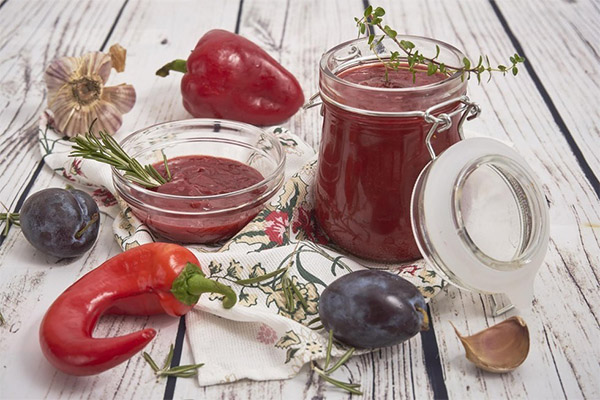
The plums should be washed, cut in two parts and remove the bone. Pepper should be cut and using a knife to remove all the seeds. At the same time, it is recommended to use gloves to avoid burns on the skin. Garlic cloves also need to be peeled.
These ingredients should be chopped in a meat grinder or use a blender. The resulting mass should be transferred to a saucepan, and then add the remaining components. Bring the mixture to a boil and simmer for 20 minutes. While the ajika is boiling, rinse and disinfect the jars.
When hot, put the dish in jars and close. Ajika should cool at room temperature, after which it can be stored.
Wine .
For making wine from plums need 10 kg of plum fruit, water at the rate of 1 liter per 1 kg of fruit pulp, sugar - at the rate of 200-300 grams per 1 liter of juice.
Harvested fruits should be ripe, for a few days they should be kept in the sun so that they slightly wilted. You should not wash the plums, if necessary, you can only wipe them with a dry towel. During their time in the sun, the peel of the fruit becomes covered with a layer of fungus and bacteria, which are wild yeasts. These are the ones that lead to wine. Therefore, if the plums are washed, the drink will not ferment.
Next, remove the pips, crush the pulp until a homogeneous mass. The resulting pulp mix with water in a ratio of 1:1 and keep for two days in a dark and cool place. Stir the mash every 6-8 hours. In 2 days, when the skin and pulp will begin to separate from the liquid part, and the surface will be covered with bubbles and foam, it means that the fermentation process has begun. Now you need to strain the mass to get rid of the pulp.
Now it is time to add granulated sugar. For a dry and semi-dry drink, 100-200 grams of sugar per liter of liquid will be enough, and for a semi-sweet and sweet alcoholic product, 300-350 grams of sweetener per liter of plum juice will be needed.
It is recommended to add sugar in portions. Send the juice for fermentation in a dark place, taking care to install a water seal. Every 5-6 days you can add 1/4 of the sugar. This should be done as follows: remove the water seal, drain a small amount of juice, dissolve the sugar in it and pour the ready syrup into the pot with wine.
The fermentation lasts for 9 weeks. The plum wine may mature for a couple of months.
Pastila
To make marshmallow, you need to prepare 1 kg of plums, a cup of honey or sugar and a lemon. Peeled fruits sprinkle with sugar and leave for some time to release the juice. If desired, you can add lemon zest. Boil the mass on low heat until the fruit has softened. Next, grind the mixture with a blender. Boil the plum puree for about 3 hours until a thick consistency. The resulting mass spread a thin layer on a baking tray lined with parchment. Dry the marshmallow in an oven heated to 110 degrees for 4-4.5 hours.
Pickled plums
Ingredients needed to make pickled plums: 0.5 kg of fruit, a tablespoon of vegetable oil, 5 teaspoons of sugar, 3 tsp. salt and vinegar, 6 cloves and 2 bay leaves.
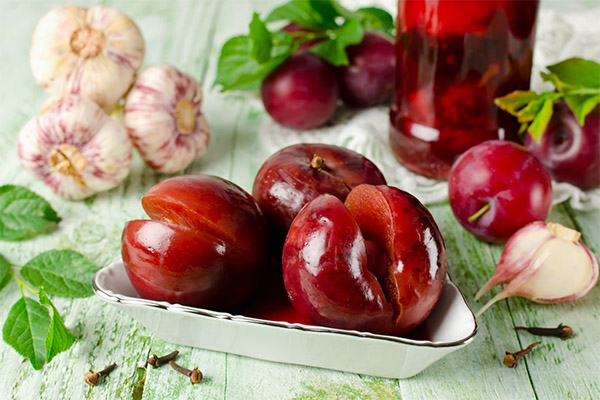
For such a dish, it is desirable to choose small plums of dark color. Next, in decontaminated jars, put the fruit, pour boiling water, cover with a lid and leave for 5-7 minutes. After that, drain the liquid from the jar and dissolve in it salt and sugar, add vinegar and bring back to a boil. Add spices to the fruit, then the brine, brought to a boil, again pour into the containers. In each jar you need to add 1 tbsp of oil. It remains only to roll up the jars, turn them over and cover. Once cooled, blanks can be put away for storage.
Can I give plums to animals
Plum is a source of vitamins and various minerals. Often pet owners do not give their pets fruit for fear that they may become allergic or intoxicated. As for plums, they can weaken a pet's intestines. But this does not mean that this product should be excluded from the pet's diet. It is important only when choosing a plum to give preference to a variety such as "Hungarian", as it will have the least effect on the pet's stool. Veterinarians recommend giving plums to large breed dogs. However, in any case, it is necessary to monitor the amount of fruit consumed by the pet.
Interesting facts about plums
- In China, the plum tree is a symbol of winter.
- You should not plant tomatoes and potatoes near a plum tree, as these vegetables attract fungus, which is deadly to the fruit crop.
- In ancient times, there was a custom in the Balkan countries, according to which a person had to plant a plum tree along the road for absolution of sins by the priest. It is for this reason that many plums now grow in those regions.
«Important: All information on this site is provided for informational purposes only. for informational purposes only. Before using any of the recommendations, please consult with a health care professional. specialist before applying any of the recommendations. Neither the editors nor the authors shall be liable for any possible harm caused by materials."

